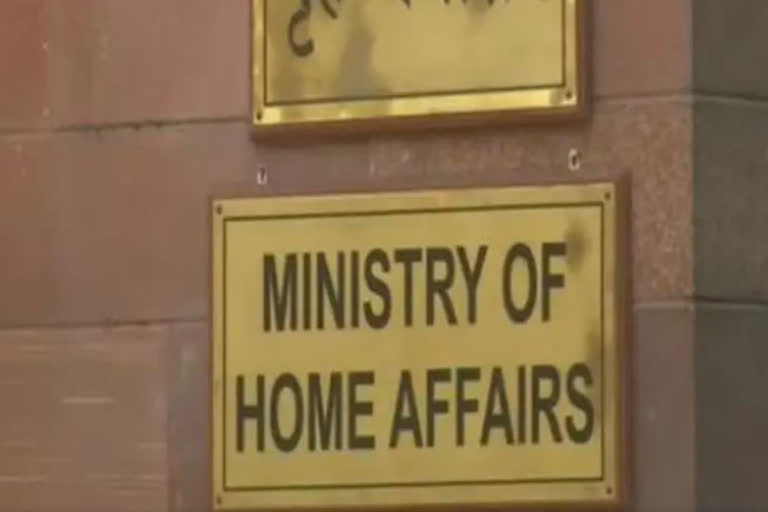New Delhi: The Union Ministry of Home Affairs (MHA) has chalked out a blueprint to wipe out Left-Wing Extremism (LWE) from the country in the next two to three years. According to the blueprint, the Ministry has zeroed in 25 most Naxal-affected districts across nine States for massive infrastructure development.
“The sole aim is to bring an overall infrastructure development in the Naxal affected areas so that the gullible youth can’t be exploited by the ultras,” a senior official in the Home Ministry dealing with the Naxal matter told ETV Bharat on Wednesday. The official said that apart from opening new bank branches in Naxal affected areas, 2542 mobile towers will also be set up in the coming days.
“In the last few years, we have set up 47 ITIs, 62 skill development centers, 11 Kendriya Vidyalayas, 6 Jawahar Navodaya Vidyalayas, 1200 bank branches in the Naxal affected areas,” the official said. He also said that one district in Andhra Pradesh, three in Bihar, seven in Chhattisgarh, eight in Jharkhand, one in Madhya Pradesh, one in Maharashtra, three in Odisha, and one district in Telangana have been identified as the most affected districts by Maoists.
Significantly, due to the resolute action being taken by the government agencies, the number of districts affected by Naxals has also come down. Accordingly, the number of districts covered under the security-related infrastructure (SRE) scheme has now come down from 90 in 11 States to 70 in 10 States. The review of SRE districts and the most affected were last revised in 2018.
For rapid development in the LWE affected States, the Ministry of Environment, Forest and Climate Change has given general approval for the diversion of forest land for infrastructure-related projects in 14 categories relating to schools, dispensaries and hospitals, electrical and telecommunication lines, drinking water projects, water, rain harvesting structures, minor irrigation canals, non-conventional sources of energy, skill up-gradation and vocational training center, rural roads.
As per government records, the 25 most-affected LWE districts in nine States are eight in Jharkhand (Chatra, Giridih, Gumla, Khunti, Latehar, Lohardaga, Saraikela-Kharaswan, and West Singhbhum), seven in Chhattisgarh (Bastar, Bijapur, Dantewada, Kanker, Narayanpur, Rajnandgaon, and Sukma), three each in Bihar (Gaya, Jamui, and Lakhisarai) and Odisha (Kandhamal, Malkangiri, and Kalahandi), one each in Telangana (Bhadradi-Kothagudam), Maharashtra (Gadchiroli), Madhya Pradesh (Balaghat), Andhra Pradesh (Visakhapatnam).
The latest report of the Home Ministry said that the resolute implementation of the national policy and action plan by the government has resulted in unprecedented improvement in the LWE scenario across the country. The last six years have seen a significant decline in LWE violence as well as the geographical spread of LWE. The declining trend which started in 2011 continues in 2020 as well. There has been an overall 41 percent reduction in violent incidents (1,136 to 665) and 54 percent reduction (397 to 183) in LWE-related deaths in 2020 as compared to 2013, the MHA said.
“In comparison to 2019, the year 2020 also saw the same level of violence with a marginal decline (670 to 665) in incidents of violence and the resultant deaths by 9 percent (202 to 183). The casualties among security forces declined by 17 percent (52 to 43). At the same time, the developmental outreach by the Government of India has seen an increasingly large number of LWE cadres shunning the path of violence and returning to the mainstream,” the MHA said.
However, Chhattisgarh and Jharkhand are the two States mostly affected by Naxalism. As per government statistics, in 2020, Chhattisgarh with 315 incidents and 111 deaths remains the worst affected State, followed by Jharkhand (199 incidents and 39 deaths), Odisha (50 incidents and 9 deaths), Maharashtra (30 incidents and 8 deaths) and Bihar (26 incidents and 8 deaths).
Also read:MHA has details of over 10.69 lakh sexual offenders



